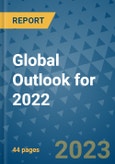Global economic activity has experienced a major downshift in 2022, and headwinds will continue into 2023.
In our base case, we anticipate just 2.1% real global GDP growth in 2022 and 1.6% growth in 2023, a rate consistent with a mild global recession. Cost pressures will persist despite weakening demand, as many drivers of inflation appear entrenched.
Although the outlook is unequivocally negative, unknowns and uncertainties around China’s Zero-COVID strategy, Europe’s energy supply, and Federal Reserve policy continue to dominate. 2023 is expected to see further depreciation across a range of currencies, a global manufacturing downturn, and easing prices for some inputs and commodities.
Weak or negative growth along with high inflation is a recipe for social unrest, and companies should be attuned to the potential for political surprises across markets of operation. A challenging environment nonetheless offers opportunities to pursue innovations and reorient strategy; companies that prioritize resilient segments, support customers and partners, and effectively communicate their value proposition stand to outperform the market.
Table of Contents
- Global Outlook for 2023
- Regional Growth Outlook and Scenarios
- Asia Pacific
- Western Europe
- Central Europe
- Commonwealth of Independent States
- Middle East & North Africa
- Sub-Saharan Africa
- Latin America
- North America
- Strategic Priorities for 2023
Methodology
The author’s strengths include global management topics and country level analysis tailored for a senior executive audience. The research focuses on cross-industry implications of macroeconomic, geopolitical risk, and emerging trends that impact the strategic decisions of business decisionmakers.
Research analysts:
Almost all have advanced degrees in economics, international affairs, or political science, and are multilingual. Researchers have lived and worked in the markets they cover and are based in regional hubs close to market
- Analysts cover:
- Economic trends and indicators (near-term volatility, long-term forecasts); political developments (election results, post-election policy, regulations, spending, monetary policy), outlook for market demand and cost of doing business, upside and downside scenarios, MNC investment sentiment, business practices
- Quality control:
- Research workflows supported by standard, proprietary process maps, tools and templates for analysis and writing, forecast admin tool, and content management system
- Research managers pressure-test quality, consistency and usefulness of outlooks, scenarios, and suggested actions
- Analyst interactions with clients (>1500/year) provide ongoing feedback loops from on-the-ground operators to c-suite
- Research inputs include:
- Primary: Multinational and local executives (interviews, surveys, analyst consultations), international and local experts (NGO officials, academics, consultants), international and local government officials
- Secondary: Local-language news and international media, public/official data sources, government/association reports, Bloomberg
- Research outputs include:
- Forecast economic data, country/region outlooks and scenarios, market intelligence reports (monthly/quarterly for key countries as well as occasional Market Spotlights), as-needed analyst commentary alerts

LOADING...








